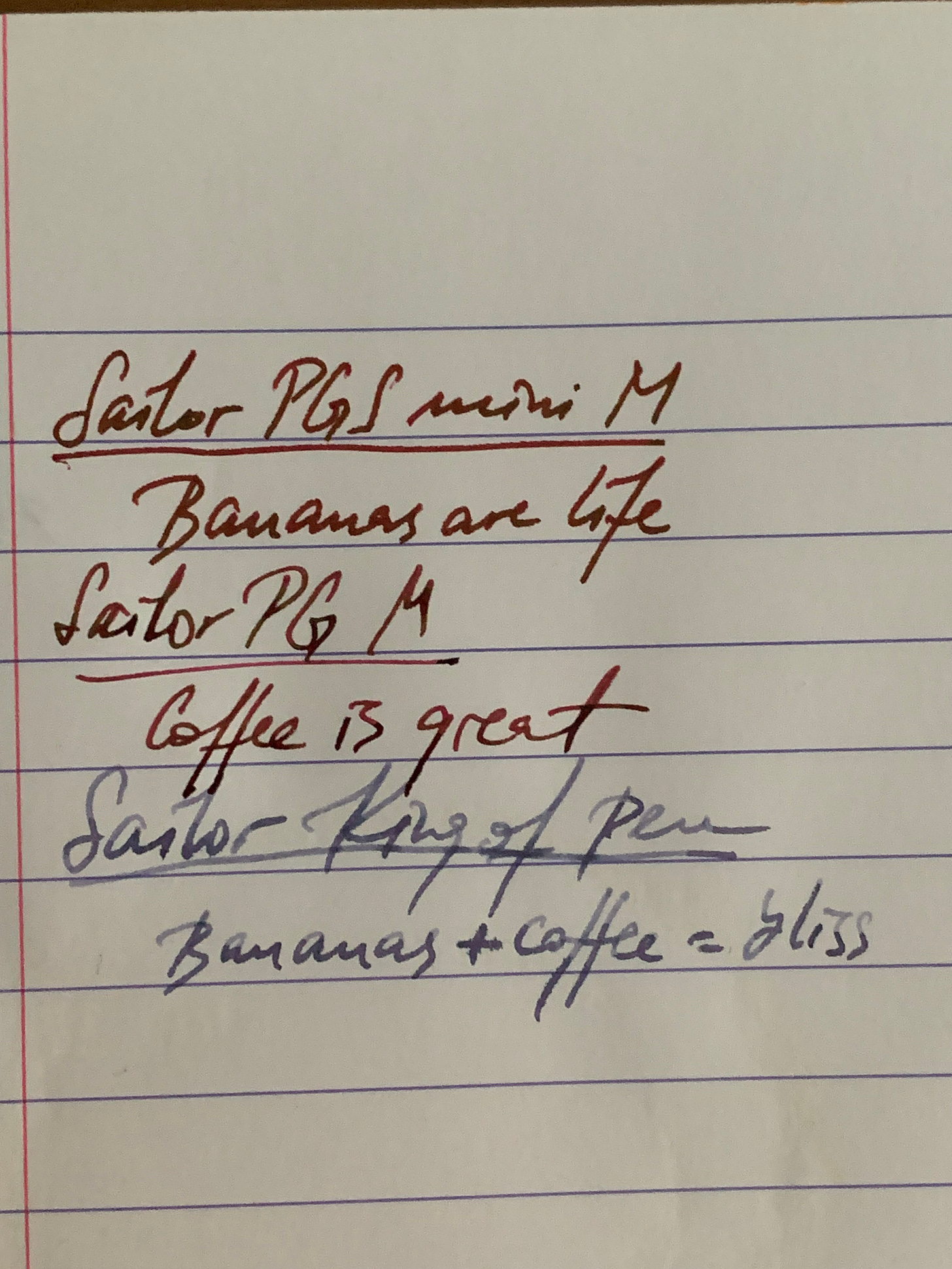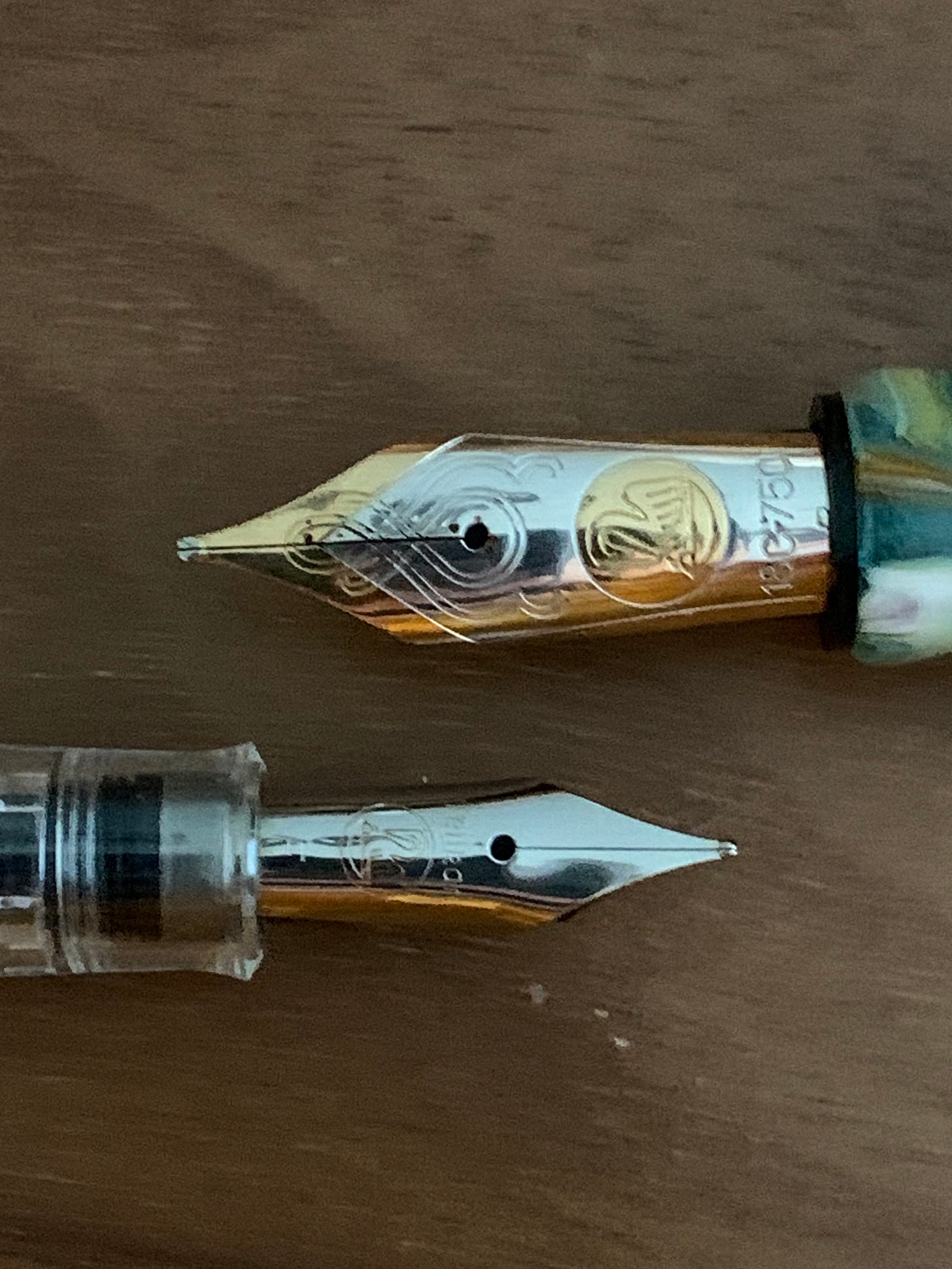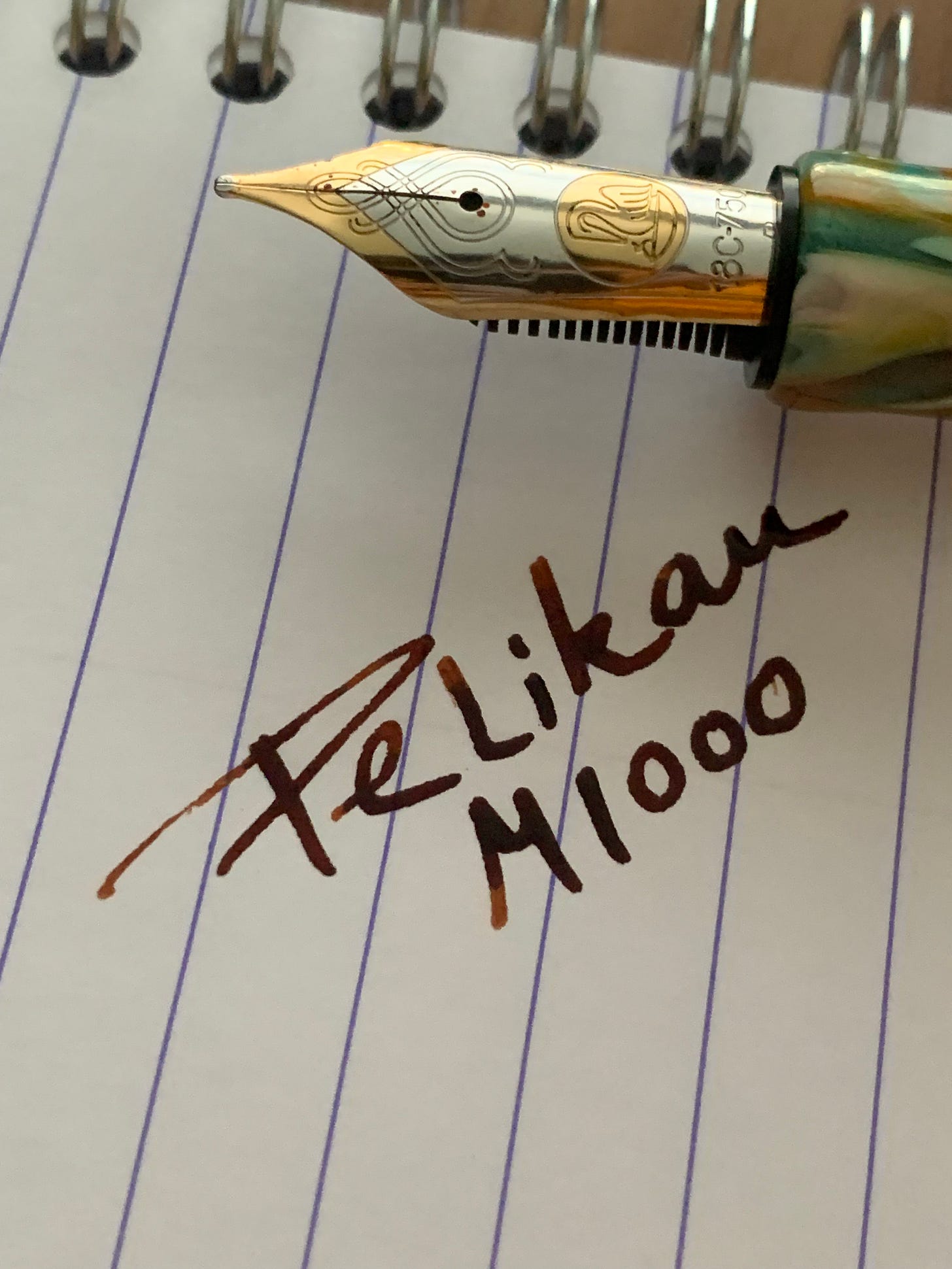Does size really matter? A scientific comparison of #5, #6, and #8 nibs (part 1)
And then Pilot is like not so fast :laughs in no. 30:
A few weeks ago, during our pen club meetup, as I was lamenting the fact there are thousands of pens out there that I’ve never been able to get my grabby hands on, I was given the opportunity to eat my words. I’m a fan of eating my words when it comes to pens, when I got offered some remarkable pens to test and compare to those I already have, which are also remarkable, but less remarkable (grass is greener on the other side, right), I enthusiastically agreed, especially since there was talk of sizes. I was and still am very interested in putting some pens together just to settle the debate on size vs. performance… of nibs.
Now, we could touch the subject of physical pen sizes, and I will say that would also play a certain role in how the pen works for various people; for example, I can’t use pens that are too thin as they hurt my wrist — some caveats apply, since some pens I have are super thin and work well for me — but I also can’t use girthy pens either — unless they’re Opus 88 Minis, it seems. It’s a hit or miss, really. Today, however, I will contain my thoughts and ideas about pens to nibs only, since the business end of the pen is the most expensive and provides the most variable in one’s writing experience.
With some caveats.
Left to right: Sailor Pro Gear Slim, Pelikan M205, Jinhao 51a, Sailor 1911, Sailor King of Pen, a F3 pen with a surprise nib, Jinhao 9019.
As you can see, I have several interesting pens for you today, and without further ado, let’s start with Sailors.
Sailor nibs
I was loaned the Sailor King of Pen for the purpose of a review and as such it’s not a part of my regular rotation. Another side note: it looks like my Noodler’s Ahab Lapis Inferno, if an Ahab was more substantial, less rounded, and less smelly. I mean the colorway is similar enough and this pen is not in any shape or form reminiscent of an Ahab otherwise. Especially not the nib.
Everyone and their grandmother can tell a Sailor nib apart from most other nibs out there. The (in)famous ‘pencil-like’ feedback. The ‘unlike any other nib’ claims :shakes fist at the crowd:. If you’ve ever used a pencil and put your ear close to it while maniacally scribbling or shading your drawing, you know what I’m talking about. And to those who will ask, well, why don’t you just resort to using pencils then, you audiophile, to those people I will say that this is not a pencil blog and I know nothing about pencils; all I know is that my inner child is delighted to use any Sailor nib because I loved the sound graphite makes on paper when I was young and full of life.
I have my own opinions on black coated nibs and I have my own ideas on the differences between ‘old’ and ‘new’ stamping as well, none of which matters today as we will just be talking sizes. And, to be as scientific as possible, we shall be using the same width in three different physical sizes of Sailor nibs.
Unlike, say, Pilot, Sailor uses ‘standard’ nib sizes for most of their pens — although the same type of logic cannot be applied to their naming conventions. To start things off, let us look at how the no. 5, 6, and 8 nibs look next to each other.
Left to right: Sailor Pro Gear Slim (14k), Sailor 1911/Pro Gear (21k), Sailor King of Pen (21k)
The smallest nib is also a 14k gold nib, and the two bigger ones are 21k. What that means is one would expect the nib with the least gold content would be less springy, less soft, and behave a tiny bit differently, right? Well, no. Not really. I found that all of these, albeit distinctly different, still very much feel very Sailor-like in the sense of similarity in their feedback (which will absolutely feel different based on tip width though), with the only difference being the perceived ‘give’ in each size. The ‘give’ exists — I am super convinced — because of the length of the tines. I did science and I can confirm that the tines are actually longer the bigger the nib is.
I’ll wait while you giggle internally about ‘size really matters’ implication within this review. Go on.
The 14k Sailor nib on the Pro Gear Slim or 1911S (or Promenade, or even the Mini model, for that matter) is going to be the firmest (whatever that may mean for Sailor) of the bunch. The PGS will be the most compact of the bunch too, and as such, you may want to have one of these as they’re reliable and consistent, look good, and write well.
The 21k nib on the Pro Gear or 1911 will give you the same feedback with the slight bounce that will be mostly imperceptible. With the added sliver of length, the bounce will show if you care to pay attention, but I cannot stress this enough: this is not a soft nib, this is not a flex nib, and you should not press hard. It’s just a pleasant nib to use and it’s fun and if you like feedback, this is ya boi. You may want to have one of these as they’re… reliable… and consistent… and look good… and write well.
The 21k nib on the King of Pen will still feel very much like a nail, will give you a tiny bit of a bounce — not that much more than the #6 21k nib, though — and again, will give you the same feedback. If you want to drop big money on this pen, you can… it’s reliable and consistent and looks good and writes well.
I’m pretty sure there’s a pattern here.
In my very unbiased opinion, the size here doesn’t matter much; I personally do not believe the upgrade from the Pro Gear to the KOP is worth the money, but I will not stop you from trying. For me, the KOP is too big and too heavy for longer writing. Yes, I have long fingers, and yes, I can use the PGS and the PG perfectly interchangeably, and I can also enjoy the KOP… but it’s just not the pen that I would necessarily seek out. Of course, your mileage may vary, and I urge you to try the nib for yourself. It’s an experience.
Pelikan
My closest friends know me as someone with super strong opinions on matters that matter not; my pen friends know me as someone who will buy pens despite not liking them. One of those pens was the Pelikan M205 that I bought second hand so I could tell myself I have a Pelikan pen. Most of them don’t really appeal to me — my apologies to Pelikan fans — yet I am a fan of demonstrators, and thus I picked out the sub $100 pen to start my Pelikan journey. Honestly, this nib is super small, and I will venture to say it’s basically a #5 nib. And it’s a steel nib. And if this is your first foray into Pelikan nibs, you’re in for a slight disappointment since — bear with me — you expected something super cool, and this nib is just… okay.
Top: Pelikan M1000 nib, bottom: Pelikan M205 nib.
Enter: the Pelikan M1000 nib1.
Now, I do not have any of those in between nibs (M400-M800) so take my words with a grain of salt, but I am pretty sure no person alive will disagree with me when I say that the M1000 nib is the S tier of nibs. This chonker had me pause as I put it against the paper to write my first words. Dear reader, I was floored, and for me to be lost for words, I really need bananas to be absolutely disgusting or a nib to be so divine it exceeds logic. The B nib is slightly stubby, and if I was prone to fainting from joy, I would’ve knocked my brain straight out of my skull. The softness and mushiness of this nib reminds me of a dessert, something decadent, chocolatey, warm, and inexplicably appealing to the senses.
You may not want to compare a #5 stiff steel nib to a #8+ gold nib but this is like eating a stale gas station cookie in the rain vs. being fed a Michelin star dessert while also getting fanned by three androgynous fairies. This nib is going onto my wishlist, is what I am saying.
Size matters? Yes. Hecking yes.
Jinhao
Now I know what you’ll say — “But,
, why would you talk about fancy pens just to switch to Jinhaos?” — and I’ll be the first one to say that you’re right. I should probably stick with more expensive pens, but the thing is, I’m also a big fan of more affordable options, and I was pleasantly surprised by the differences in Jinhao nibs as well. Besides, one can’t spell Montblanc without Jinhao, can they?For the no. 5 nibs, we have a slew of super cool and super affordable pens such as the 82, the 51a (not the hooded nibs), that one that looks like Sailor 1911S and we both forgot the name of; I’ve used all of them and I am super partial to the 51a. Such fun pens. The nibs are usually consistent, some being a bit drier, but most times, you get more than what you pay for (sub $10 category, pen included).
For no. 6 nibs, you can buy loose ones and just mount them in any pen you desire; I have used these to practice nib grinding, tuning, etc. They’re again consistent and not soft, just standard, business-like nibs that won’t have you pine for them, but they’ll get the job done.
And then we have the Jinhao 9019 with the absolute unit of a no. 8 nib and everything I just said about Jinhao nibs goes right out of the window. This massive nib slams through the door with beer kegs and gets the party going; at the end of the night, you’re probably in jail for joyriding, but it was worth it. It’s wet, fun, huge, and you will go back for more. The best part? You don’t have to spend several hundred dollars to get the wildest writing experience of your life; you just need to be bold and stalk eBay or Aliexpress.
The 5 on the 51a vs the 8 on 9019.
Size matters again!
***
Conclusion: as always, it’s up to you, dear reader. This long post is to say that it’s mostly always up to you and your wallet. There will always be another nib, another pen, another nib size; what matters most is finding the pen you’re most comfortable with and using that to your heart’s content. Besides, all pens serve a purpose; you just need to figure out when and what you want to use.
What’s your favorite nib size?
The nib is mounted in a lovely F3 pen that I believe deserves a separate review; coming soon.










The X159/9019 nib is stupidly good! So much nib for so few $'s